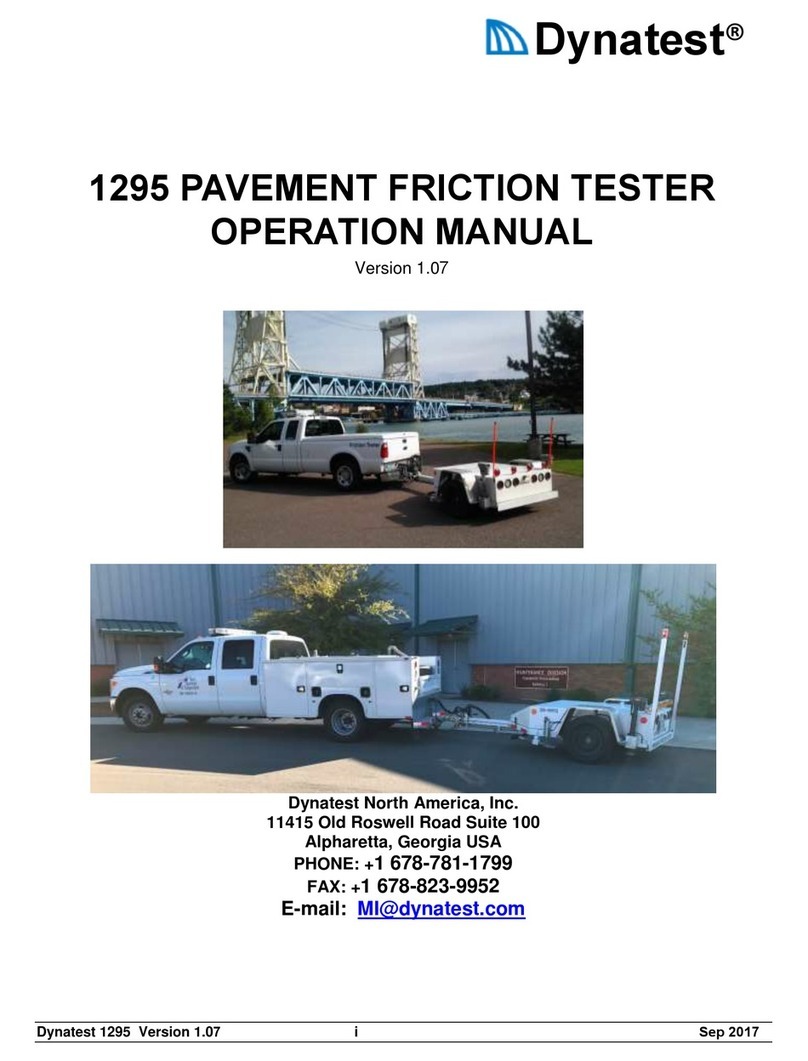8.5 During Driving........................................................................................................8-55
9. Running the Program................................................................................................9-56
9.1 Switch ON...............................................................................................................9-56
9.2 Warnings.................................................................................................................9-56
9.2.1 Emergencies...................................................................................................9-56
9.2.2 Stopping a Sequence......................................................................................9-56
9.2.3 Driving...........................................................................................................9-57
9.3 Dynatest Data Collection (DDC)............................................................................9-57
9.3.1 Applets...........................................................................................................9-57
9.3.1.1 Network .............................................................................................9-58
9.3.1.2 DMI....................................................................................................9-58
9.3.1.3 Speedometer.......................................................................................9-59
9.3.1.4 Thermometers....................................................................................9-59
9.3.1.5 GPS....................................................................................................9-59
9.3.1.6 Camera...............................................................................................9-60
9.3.1.7 Ground Penetrating Radar .................................................................9-61
9.3.2 Simulation Mode ...........................................................................................9-62
9.3.3 Entering the Main Program ...........................................................................9-62
9.4 The Data Collection Screen ....................................................................................9-63
9.5 Main Window .........................................................................................................9-64
9.5.1 Navigating with the Keyboard.......................................................................9-64
9.5.2 Special Keys ..................................................................................................9-66
9.6 Sub-Windows..........................................................................................................9-67
9.6.1 LED Panel......................................................................................................9-68
9.6.2 Time Histories ...............................................................................................9-68
9.6.3 Surface Moduli ..............................................................................................9-68
9.6.4 Surface Moduli Chart ....................................................................................9-68
10. Performing the Measurements ...............................................................................10-69
10.1 Test Setups............................................................................................................10-69
10.2 Test Section...........................................................................................................10-75
10.3 Data Files ..............................................................................................................10-77
10.4 Running a Test ......................................................................................................10-78
10.5 Remarks ................................................................................................................10-79
10.6 Auxiliary Outputs X and Y...................................................................................10-79
10.7 Closing the Data File.............................................................................................10-80
10.8 Opening a Data File ..............................................................................................10-80
10.9 Exporting Data......................................................................................................10-80
10.10 Monitoring the System’s Status ............................................................................10-81
10.11 Manual Control .....................................................................................................10-83
10.12 Exit........................................................................................................................10-83
11. The Dynatest FWD/HWD Hardware.....................................................................11-84
11.1 General Description ..............................................................................................11-84
11.2 Trailer Specifications............................................................................................11-86
11.3 FWD/HWD Hydraulics.........................................................................................11-87
11.3.1 General Description.....................................................................................11-87
11.3.2 Adjusting the Hyd. Pump Excess Pressure..................................................11-93
11.4 Electrical System...................................................................................................11-95
11.4.1 Transducers..................................................................................................11-95
11.4.2 FWD/HWD Control Circuits.......................................................................11-96
11.4.3 Trailer Status Switches................................................................................11-96
11.4.4 Hyd. Unit Connections ................................................................................11-97
11.4.5 Trailer Powering..........................................................................................11-97





























